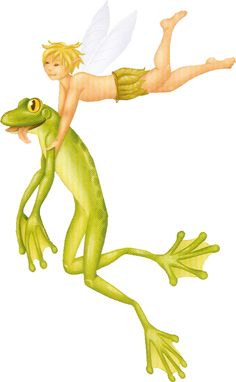It all began during the Middle Ages when superstitions arose around surrounding children's teeth. In England, children were instructed to burn their baby teeth in order to save the child from hardships in the afterlife. It is thought that the Vikings paid children for their baby teeth. The Norsemen believe that baby teeth, and any other articles belonging to children, brought them good luck. early Scandinavian warriors hung children's teeth on a string around their necks. Fear of witches was another reason to burn, or bury, children's teeth. In medieval Europe, it was believed that if a witch were to get a hold on one's teeth, they would gain total control over that person so it was best to dispose of them quickly! The earliest known reference to the Tooth Fairy in the US dates to 1908 in the Chicago Daily Tribune's Household Hints column, by Lillian Brown. It reads;
"Tooth Fairy. Many a refractory child will allow a loose tooth to be removed if he knows about the tooth fairy. If he takes his little tooth and puts it under the pillow when he goes to bed the tooth fairy will come in the night and take it away, and in its place will leave some little gift. It is a nice plan for mothers to visit the 5 cent counter and lay in a supply of articles to be used on such occasions."
A 1984 study on the subject, found that 74-percent of those surveyed believed the Tooth Fairy to be female, 12-percent said the fairy was neither male nor female, and 8-percent thought it could be either sex.
In India, China, Japan, and Vietnam the practice is to throw the teeth around. Teeth lost from the lower jaw will get tossed up on the roof, while those from the lower jaw will go on the floor...or even under it! Sometimes the tooth-losing child will yell a wish that that the lost tooth be replaced by the tooth of a mouse....a rodent who's teeth continually replenish themselves. In Spain, and other Hispanic countries, children believe that a mouse collects their lost teeth and replaces them with a small gift, not always money. In Iraq, Jordan, and Egypt the children are encouraged to toss their lost teeth up into the air...a tradition that might date all the way back to the 13th-century. In South Africa, baby teeth are placed inside slippers, rather than under bed pillows. The French have a "dental mouse" as well. French children leave their lost teeth under their pillows and the mouse replaces it with a sweet treat...which definitely keeps the mouse in business! And in Mongolia, the child puts a little fat on the tooth and feeds it to the dog hoping that when the tooth grows back, it'll be as strong as their canine friend's. No dog? Bury the tooth under a tree that has a strong root system.
So how do you celebrate National Tooth Fairy Day? By using #NationalToothFairyDay on all your social media. But my favorite way to celebrate is by watching the adorable 2009 movie, "Tooth Fairy," staring Dwayne "The Rock" Johnson and the always wonderful Julie Andrews. It's a great film for both children and adults. I know you'll enjoy it!
Isn't the Tooth Fairy supposed to take just the tooth?

 RSS Feed
RSS Feed